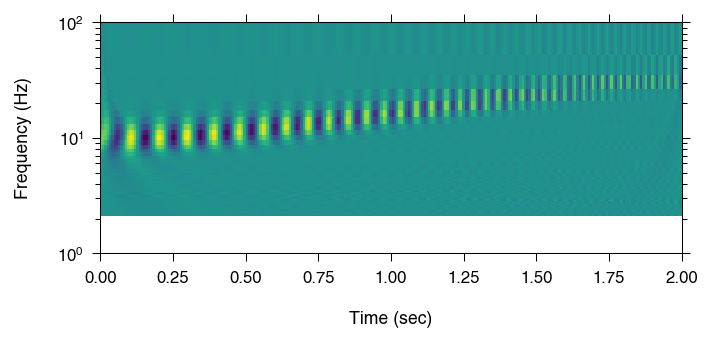I have an EEG signal that I'm interested in analyzing it in both time and frequency domains. I have already used scipy.signal.spectrogram function, but I think using wavelets can yield better results for feature extraction. I tried running the continuous wavelet transform on artificial signal that I created as follows:
fs = 128.0
sampling_period = 1/fs
t = np.linspace(0, 2, 2*fs)
x = chirp(t,10,2,40,'quadratic')
coef, freqs = pywt.cwt(x, np.arange(1,50),'morl',
sampling_period=sampling_period)
and then I plotted the coef matrix:
plt.matshow(coef)
plt.show()
My question is how can I adjust the scale and time axes?


